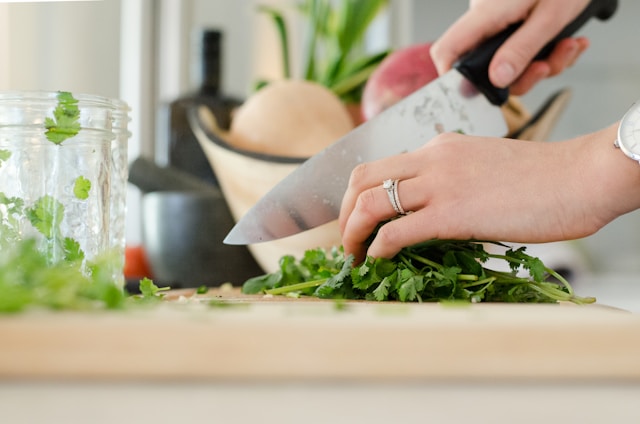Japanese kitchen knives are renowned for their precision, craftsmanship, and ability to elevate any cooking experience. Whether you’re a home cook or a professional chef, choosing the right knife can significantly enhance your skills in the kitchen. With a wide variety of options, it’s important to understand which knife suits your needs best. From versatile all-purpose knives to specialized tools for sushi or fish preparation, selecting the best Japanese knives requires knowledge about types, materials, and maintenance to maximize their longevity and performance.
Types of Japanese Knives
Japanese knives come in a wide variety, each crafted for specific tasks in the kitchen. Here are the most commonly used types:
- Santoku Knife: Known as an all-purpose knife, the Santoku is ideal for home cooks. Its name means “three virtues,” referring to its ability to handle slicing, dicing, and chopping effortlessly. It’s great for vegetables, fish, and meat.
- Gyuto Knife: Similar to a Western chef’s knife, the Gyuto is a versatile tool used by professional chefs. It excels in cutting meat, fish, and vegetables with precision and ease.
- Deba Knife: Traditionally used for filleting fish, the Deba is a thick, heavy knife that can handle tougher tasks like cutting through bones.
- Yanagiba Knife: A long, slender knife specifically designed for slicing raw fish for sushi and sashimi. Its single-beveled blade allows for smooth, delicate cuts.
- Petty Knife: A small utility knife used for intricate tasks, such as peeling, trimming, and detailed work. It’s perfect for tasks that require precision and control.
Blade Materials
The material of a knife’s blade impacts its sharpness, durability, and maintenance needs. Japanese kitchen knives typically come in the following materials:
- Carbon Steel: Known for exceptional sharpness, carbon steel blades are favored by professionals for their superior cutting performance. However, they are prone to rust and require regular maintenance to stay in prime condition.
- Stainless Steel: Easier to maintain than carbon steel, stainless steel knives are rust-resistant and durable. While they may not be as sharp as carbon steel, they’re ideal for home cooks who prioritize low-maintenance tools.
- High-End Blends: Some Japanese knives are crafted from specialized materials like VG-10 or Damascus steel, which combine the sharpness of carbon steel with the durability of stainless steel. These premium knives offer long-lasting performance with less maintenance.
Blade Length and Shape
Choosing the right blade length and shape is essential for matching the knife to the tasks you’ll perform most often:
- Short Blades (under 150mm): Best for delicate tasks like peeling or trimming small vegetables and fruits. Petty knives often fall in this category.
- Medium Blades (150mm-240mm): Santoku and Gyuto knives are usually in this range, providing versatility for most kitchen tasks such as chopping vegetables, slicing meats, and more.
- Long Blades (240mm+): These are usually specialized knives like Yanagiba, designed for tasks that require clean, long slices, such as preparing sushi or large cuts of meat.
The shape of the blade also affects its performance. For instance, the flat edge of a Santoku makes it perfect for push-cutting vegetables, while the curved edge of a Gyuto facilitates a rocking motion for chopping.
Handle Types
The handle of a Japanese knife significantly impacts comfort and control:
- Japanese Handles (Wa-Handle): These handles are lightweight, often cylindrical or octagonal, and are traditionally made from wood. The lighter weight allows for precise cuts and is favored by chefs who prefer balance and maneuverability.
- Western Handles (Yo-Handle): Western-style handles are heavier and more contoured, offering a firmer grip. They’re typically made from synthetic materials or treated wood, providing durability and comfort for heavy-duty tasks.
When choosing a handle, consider your grip preferences and whether you prioritize control for delicate work or durability for more forceful tasks.
Knife Maintenance Tips
Proper maintenance is key to preserving the sharpness and longevity of your Japanese knife. Here are a few essential tips:
- Sharpening: Use a whetstone for sharpening as it offers the most precise edge. For quick touch-ups, a sharpening rod can be used.
- Cleaning: Always hand wash your knife and dry it immediately to prevent rust or corrosion.
- Storage: Use a knife block or magnetic strip to avoid blade damage.
- Honing: Regular honing helps maintain the blade’s sharp edge between sharpening sessions.
Choosing Based on Your Cooking Style
Your cooking style plays a big role in determining the best Japanese knife for your needs. If you’re a home cook who primarily chops vegetables and light proteins, an all-purpose knife like the Santoku will be a great fit. For more specialized tasks, like filleting fish or slicing sushi, the Deba or Yanagiba might be a better choice. Professional chefs, on the other hand, may prefer the versatility of a Gyuto or a Petty for intricate tasks. Matching your knife to your typical culinary habits ensures that you’re always working with the right tool.
Recommended Brand: Kyoku Kitchen Knives
When it comes to quality and performance, Kyoku is a highly regarded brand in the world of Japanese kitchen knives. Kyoku knives are known for their balance of affordability and craftsmanship, making them an excellent choice for both home cooks and professionals. Their blades are made from high-carbon stainless steel, often featuring a durable and sharp edge that holds up well under regular use. Whether you’re looking for a versatile Santoku or a precise Petty knife, Kyoku offers a variety of models to suit every need in the kitchen.
Some of their standout collections include:
- Kyoku Daimyo Series: Known for its VG-10 steel core, this series offers long-lasting sharpness with a beautiful Damascus finish, ideal for high-performance tasks.
- Kyoku Shogun Series: Designed for professional chefs, this series boasts ultra-sharp edges and ergonomic handles for precise, comfortable cuts.
If you’re seeking the best Japanese knives for versatility, durability, and design, Kyoku’s kitchen knives are an excellent option to consider.
Conclusion
Choosing the perfect Japanese kitchen knife depends on your needs, preferences, and cooking habits. Whether you’re seeking the best Japanese knives for general cooking or more specific tasks like sushi preparation, it’s important to consider factors such as blade material, handle type, and maintenance requirements. Investing in a high-quality knife that suits your style will not only improve your efficiency in the kitchen but also enhance the overall cooking experience.








